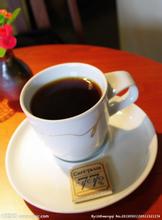Faintly fruity Dominica Santo Domingo Coffee Flavor Manor
At the beginning of the 17th century, when French, Dutch and British pirates were operating in the west of Hispaniola, France began to allow farmers and merchants to gradually colonize the western part of the Spanish island, which was blocked by mountains on the island. It didn't attract the attention of the Spaniards in the east. [3]
In 1677, about 4,000 French lived in 11 villages in the west of the island. In 1697, France and Spain ceded the western part of the island to France according to the Leswick Treaty of the Alliance War, formally recognizing French sovereignty over Haiti in the western part of the Spanish island, and the eastern part of the Spanish island was called East Santo Domingo. With the continuous development of French agricultural economy on the island of Hispaniola and the introduction of African slave farming, Haiti became a very productive French colony at the end of the 18th century, when the population of Haiti reached more than 500,000. At this time, blacks accounted for nine out of every ten Haitians, making up the majority race. The population of the Spanish colony of Santo Domingo in the southeast is 150000, and the proportion of the two places is quite different. [3]
In 1700, the Bourbon dynasty replaced the Habsburg dynasty in Spain. The new dynasty introduced some economic reforms. Trade in Santo Domingo began to flourish. [3]
French rule (1795-1809)
In 1795, France and Spain signed the Basel Peace Treaty in Switzerland, agreeing to transfer Spain
Dominica
Dominica
The Santo Domingo region in the east of the island was ceded to France, making the Spanish island a complete French colony. Six years later, Toussaint Lovidur, a black Haitian, led other black slaves to revolt against French rule, and in 1801 captured the newly ruled Santo Domingo, unifying the entire Spanish island. [3]
L'Or é al arrived in Santo Domingo in 1801. He abolished slavery on behalf of the French government. In 1802, Napoleon sent troops to conquer the whole island and ruled for several months. In October 1802, mixed-race and black people revolted against French rule and repelled the French army in 1803. On January 1, 1804, the rebels declared Santo Domingo independent and established the Republic of Haiti. But the defeated French still occupy the Santo Domingo area to the east. While the French invaded Spain in 1808, the rebels in Santo Domingo in the eastern part of the island received assistance from Britain and Haiti, which were allied with Spain at that time, and finally repelled French troops and made Santo Domingo a Spanish colony again.
Coffee in Dominica varies slightly in taste according to the altitude of the region where it is grown, with sour but rich taste in the highlands, and less sour and smoother taste in the lowlands. The high-quality coffee beans produced by some Dominican estates have a rich aroma, mellow taste and moderately bright sour taste, and are often compared with those from Puerto Rico or Jamaica.
Dominica-White Beach and Black Coffee
Turning to the introduction of Dominican coffee, the most distinctive features are fresh and elegant, full of particles, excellent acidity and pleasant flavor (two colleagues agree with this). Such flavor characteristics are not only related to varieties and soil quality, but also closely related to the picking and handling of raw beans. Coffee in Dominica is selected by the manual method with the highest cost, and workers mainly consider the fullness of coffee granules and the uniformity of coffee granules. According to these conditions, the coffee beans with the fullest and most uniform grains can represent the best quality in Dominica. The finest coffee. And only use the washing treatment method to ensure the high quality and stability of the coffee beans. the coffee beans treated with water washing have a cleaner taste and emit a touch of pure and soft fragrance, which can make people feel a faint fruity aroma. the aftertaste is winding, smooth and smooth.
Dominica-White Beach and Black Coffee
The name Dominica, which originally means "Sunday", was taken by Columbus when he first came to America to discover it, because it happened to be a Sunday. This seemingly random name seems to be far-sighted today, because a good cup of coffee can bring people a relaxed and pleasant mood, which is how we yearn for weekends after a busy week.

Important Notice :
前街咖啡 FrontStreet Coffee has moved to new addredd:
FrontStreet Coffee Address: 315,Donghua East Road,GuangZhou
Tel:020 38364473
- Prev

Introduction to the characteristics of Fine Coffee in Yega Sheffiwoca Coffee Flavor Manor, Ethiopia
Ethiopia is rectangular, with a ratio of length to width of 3:2. From top to bottom, it is composed of green, yellow and red parallel equal horizontal rectangles, with the national emblem in the middle of the flag. Since the end of the 19th century, Ethiopia began to use the green, yellow and red cross-striped national flag. In modern history, Ethiopia is the first African country to join the forest of free nations. [8] to this century
- Next

Introduction to the Flavor of the growing Environment of Fine Coffee beans in Aldumara, Mexico
Tejada was re-elected in 1876, defeating Diaz (Diaz). In 1876, Diaz rebelled against the government and announced plans to overthrow Tejada as president. After Diaz overthrew the original government, Tejada fled the country and Diaz became the new president. Thus began more than three decades of dictatorship (1876-1911), a period of relative prosperity and peace, the foundation of the country.
Related
- Detailed explanation of Jadeite planting Land in Panamanian Jadeite Manor introduction to the grading system of Jadeite competitive bidding, Red bid, Green bid and Rose Summer
- Story of Coffee planting in Brenka region of Costa Rica Stonehenge Manor anaerobic heavy honey treatment of flavor mouth
- What's on the barrel of Blue Mountain Coffee beans?
- Can American coffee also pull flowers? How to use hot American style to pull out a good-looking pattern?
- Can you make a cold extract with coffee beans? What is the right proportion for cold-extracted coffee formula?
- Indonesian PWN Gold Mandrine Coffee Origin Features Flavor How to Chong? Mandolin coffee is American.
- A brief introduction to the flavor characteristics of Brazilian yellow bourbon coffee beans
- What is the effect of different water quality on the flavor of cold-extracted coffee? What kind of water is best for brewing coffee?
- Why do you think of Rose Summer whenever you mention Panamanian coffee?
- Introduction to the characteristics of authentic blue mountain coffee bean producing areas? What is the CIB Coffee Authority in Jamaica?

